DESCRIPTION: This microscope arises from a very heavy round lead-filled foot. The pillar can incline and be locked in position by tightening the large knurled knob around it. This contrasts with another Bardou example in which the pillar sits in a non-adjustable ball and socket joint on a small flat green tripod. A single sided flat substage mirror sits in a gimbal supported by a brass rod which pases through the pillar. The stage is rectangular in front with curves in the back to meet the pillar. A lyre-shaped double stage clip slides on the pillar above the stage. There is a triple button objective and single eyepiece. Focus is simple push or pull through the lacquered brass sleeve on the arm. The stage is signed with the trademark of a a caduceus surrounded on the left by the letter 'G' and on the right the letter 'B'. under the caduceus are the words in curved letters 'TRADE MARK' and the signature of 'BARDOU & SON, PARIS' appears on the front part of the stage surface.
HISTORY OF THIS MICROSCOPE
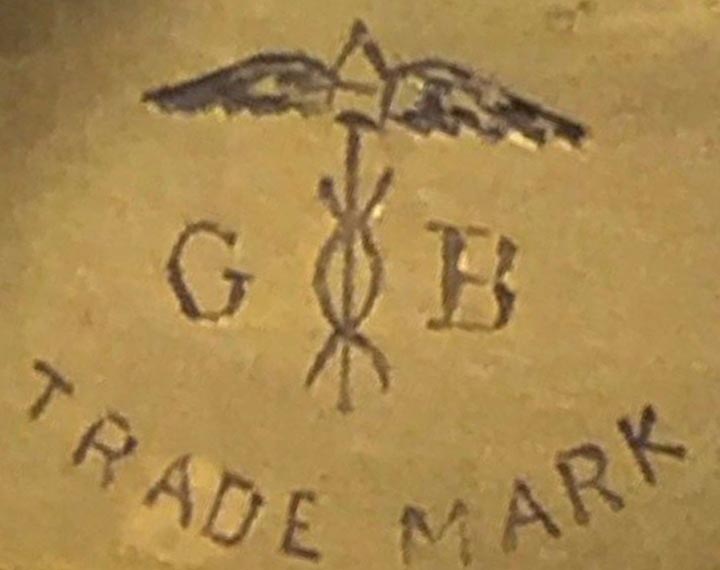 Maison Bardou was founded in 1818 by D.F. Bardou. He was succeeded by his son P.G. Bardou and his grandson, Albert D. Bardou. The company, well known as a major producer of small and recreational telescopes and binoculars, was known as Bardou & Fils from 1855-1884. In 1876 Bardou showed their instruments at the International Centenial Exhibition in Philadelphia when they called themselves 'Bardou & Sons'. Later, they were called 'Bardou & Son' and their products were imported into the U.S. by many companies including Pike, McAllister, Queen, and Meyrowitz. They continued to sell telescopes and binoculars into the first quarter of the twentieth century as is evidenced by their 1911 illustrated catalog. As is illustrated to the left in an image from a Bardou Telescope, the trademark of a caduceus with the initials G to the left and B to the right, was used frequently by Bardou on Telescopes and binoculars. A caduceus symbol was often used to indicate 'trade' hence the likely reasoning in using it as a symbol of the company. Unlike the telescopes and binoculars, of which many survive, microscopes by this company are rarely found. According to a report by R.H. Ward, MD, on the Centenial exhibition in Phildelphia and published in the Monthly Microscopical Journal of 1877, Bardou displayed, in contrast to their large selection of telescopes and binoculars, only a small number of undistinguished microscopes during the exhibition.
Maison Bardou was founded in 1818 by D.F. Bardou. He was succeeded by his son P.G. Bardou and his grandson, Albert D. Bardou. The company, well known as a major producer of small and recreational telescopes and binoculars, was known as Bardou & Fils from 1855-1884. In 1876 Bardou showed their instruments at the International Centenial Exhibition in Philadelphia when they called themselves 'Bardou & Sons'. Later, they were called 'Bardou & Son' and their products were imported into the U.S. by many companies including Pike, McAllister, Queen, and Meyrowitz. They continued to sell telescopes and binoculars into the first quarter of the twentieth century as is evidenced by their 1911 illustrated catalog. As is illustrated to the left in an image from a Bardou Telescope, the trademark of a caduceus with the initials G to the left and B to the right, was used frequently by Bardou on Telescopes and binoculars. A caduceus symbol was often used to indicate 'trade' hence the likely reasoning in using it as a symbol of the company. Unlike the telescopes and binoculars, of which many survive, microscopes by this company are rarely found. According to a report by R.H. Ward, MD, on the Centenial exhibition in Phildelphia and published in the Monthly Microscopical Journal of 1877, Bardou displayed, in contrast to their large selection of telescopes and binoculars, only a small number of undistinguished microscopes during the exhibition.
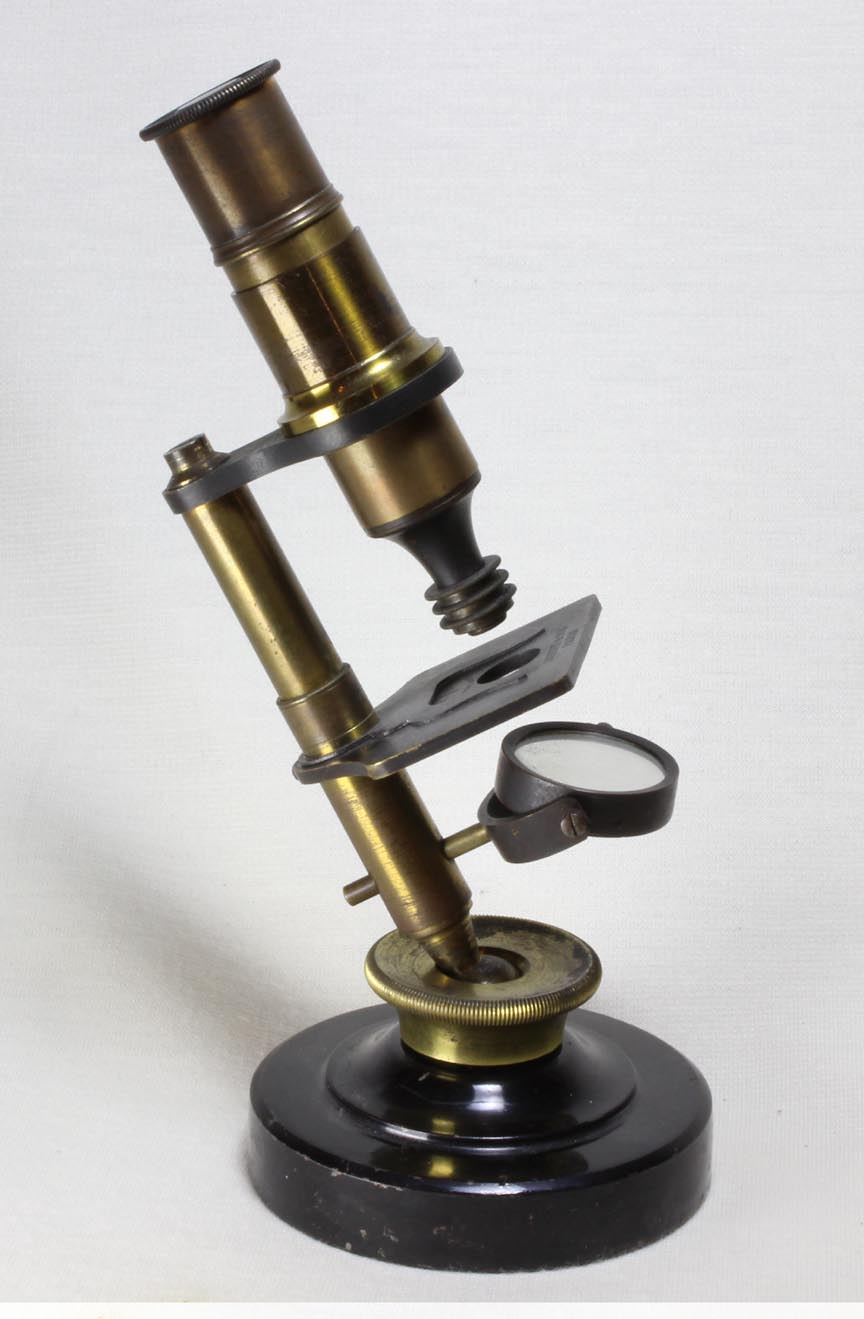
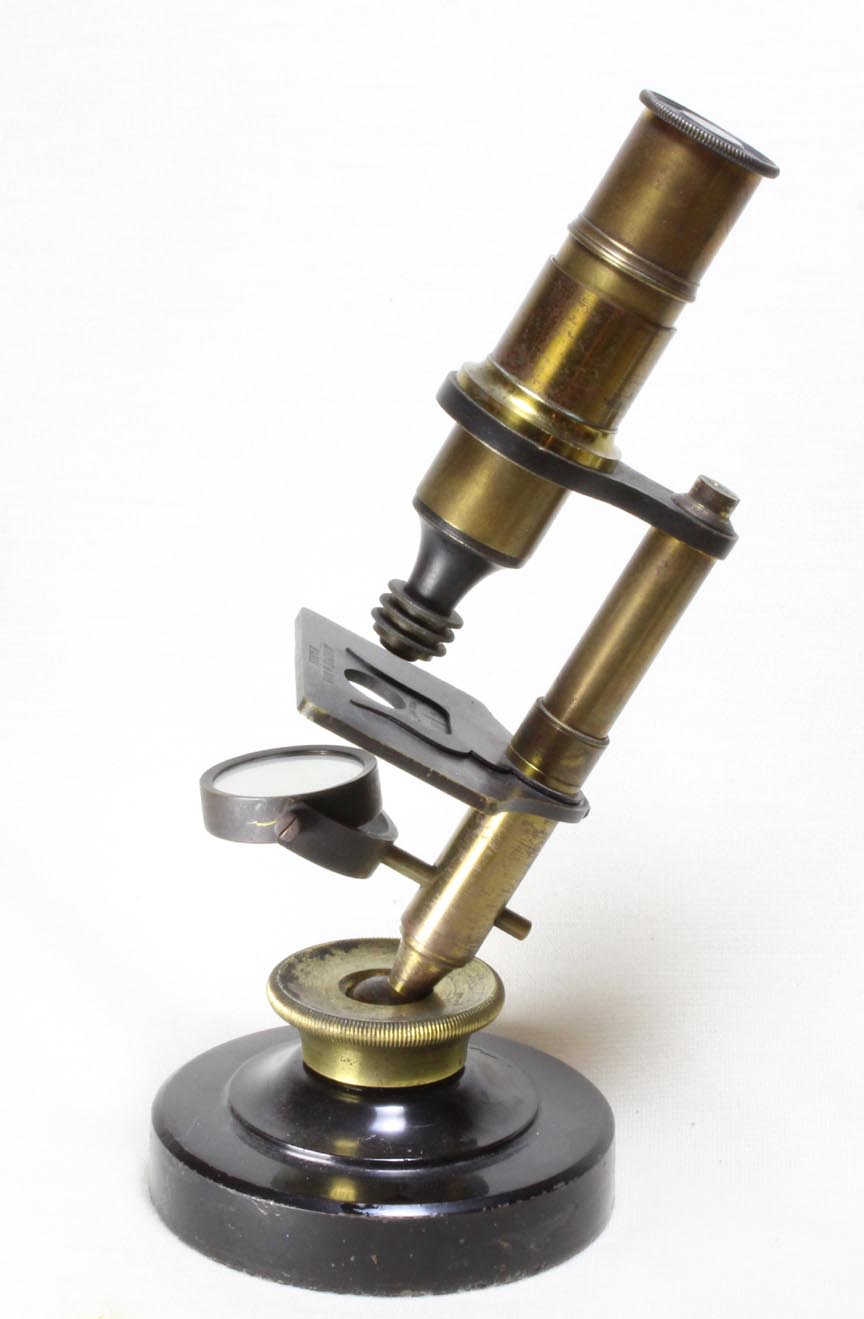
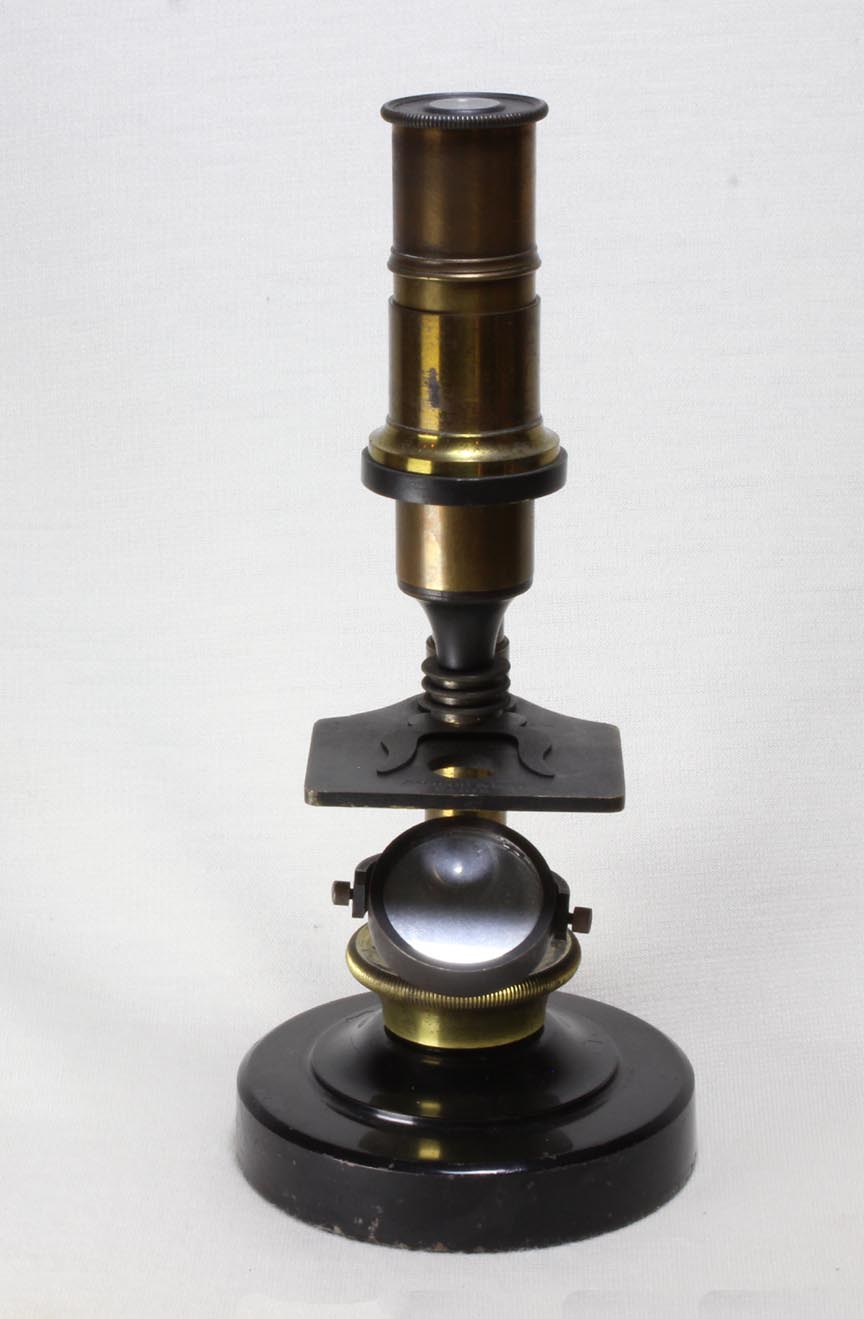
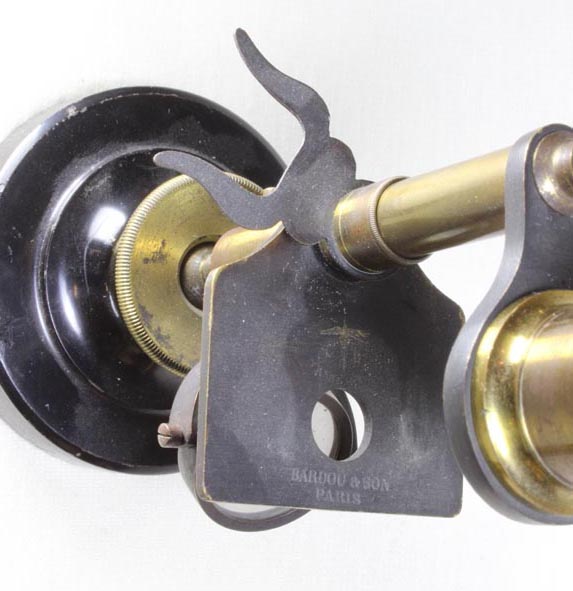
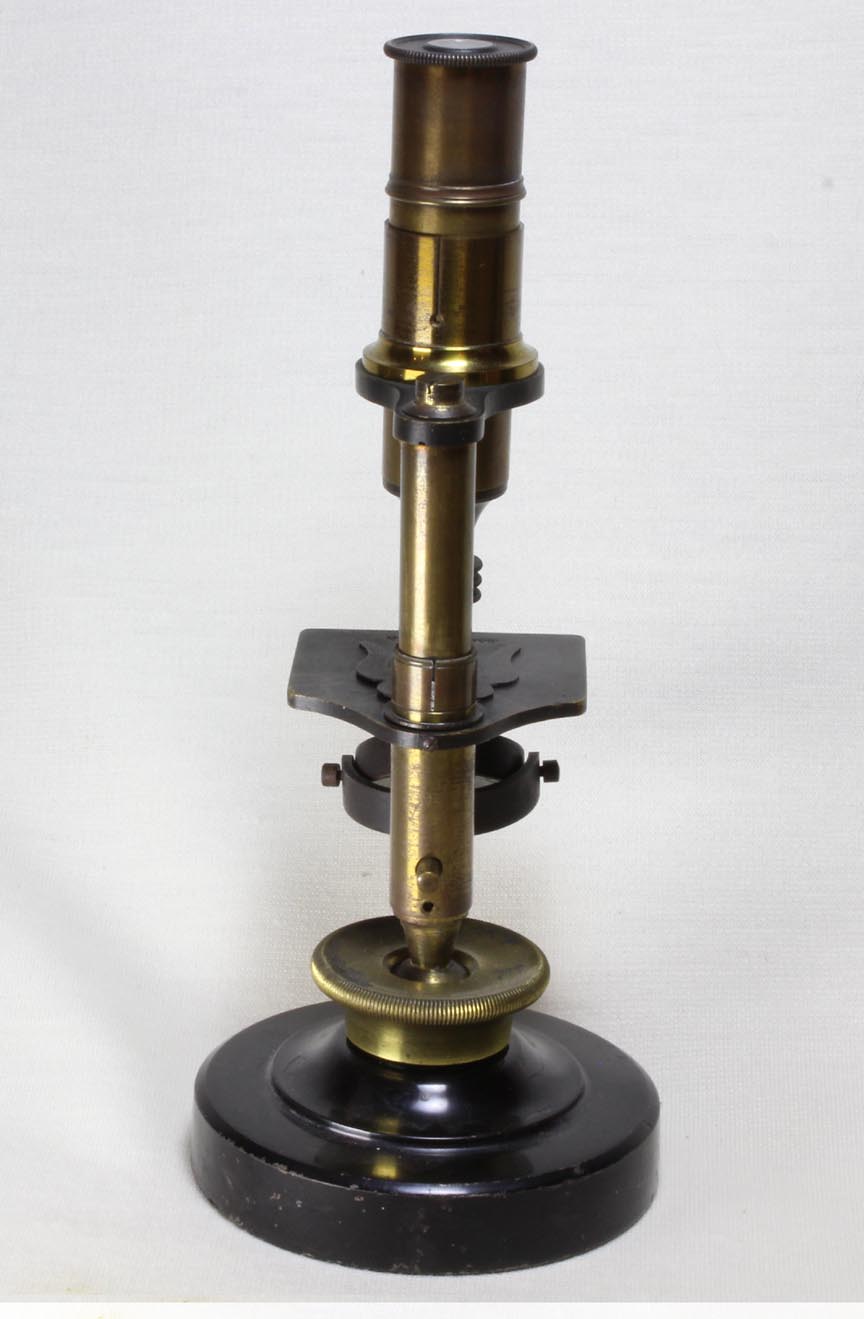
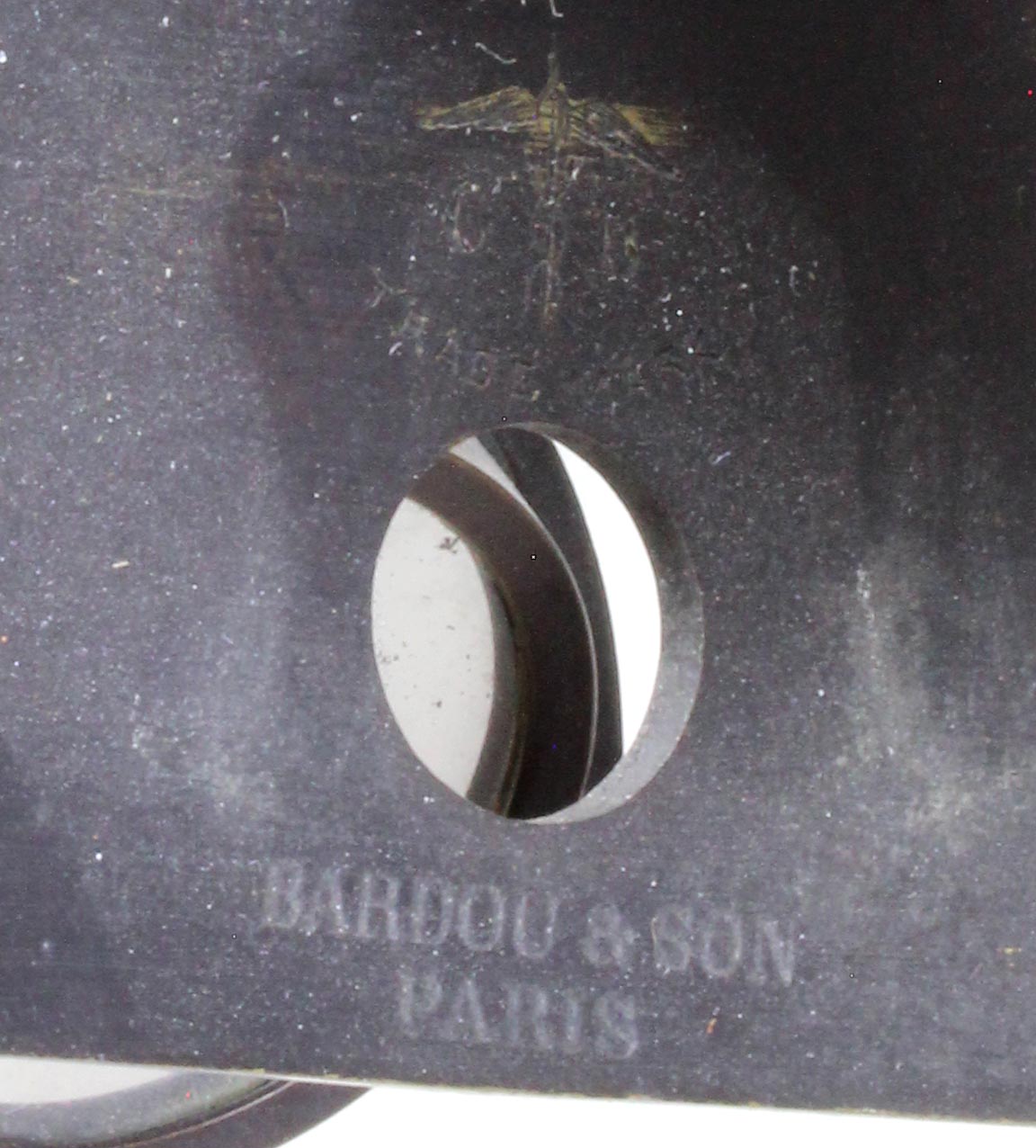
 Maison Bardou was founded in 1818 by D.F. Bardou. He was succeeded by his son P.G. Bardou and his grandson, Albert D. Bardou. The company, well known as a major producer of small and recreational telescopes and binoculars, was known as Bardou & Fils from 1855-1884. In 1876 Bardou showed their instruments at the International Centenial Exhibition in Philadelphia when they called themselves 'Bardou & Sons'. Later, they were called 'Bardou & Son' and their products were imported into the U.S. by many companies including Pike, McAllister, Queen, and Meyrowitz. They continued to sell telescopes and binoculars into the first quarter of the twentieth century as is evidenced by their 1911 illustrated catalog. As is illustrated to the left in an image from a Bardou Telescope, the trademark of a caduceus with the initials G to the left and B to the right, was used frequently by Bardou on Telescopes and binoculars. A caduceus symbol was often used to indicate 'trade' hence the likely reasoning in using it as a symbol of the company. Unlike the telescopes and binoculars, of which many survive, microscopes by this company are rarely found. According to a report by R.H. Ward, MD, on the Centenial exhibition in Phildelphia and published in the Monthly Microscopical Journal of 1877, Bardou displayed, in contrast to their large selection of telescopes and binoculars, only a small number of undistinguished microscopes during the exhibition.
Maison Bardou was founded in 1818 by D.F. Bardou. He was succeeded by his son P.G. Bardou and his grandson, Albert D. Bardou. The company, well known as a major producer of small and recreational telescopes and binoculars, was known as Bardou & Fils from 1855-1884. In 1876 Bardou showed their instruments at the International Centenial Exhibition in Philadelphia when they called themselves 'Bardou & Sons'. Later, they were called 'Bardou & Son' and their products were imported into the U.S. by many companies including Pike, McAllister, Queen, and Meyrowitz. They continued to sell telescopes and binoculars into the first quarter of the twentieth century as is evidenced by their 1911 illustrated catalog. As is illustrated to the left in an image from a Bardou Telescope, the trademark of a caduceus with the initials G to the left and B to the right, was used frequently by Bardou on Telescopes and binoculars. A caduceus symbol was often used to indicate 'trade' hence the likely reasoning in using it as a symbol of the company. Unlike the telescopes and binoculars, of which many survive, microscopes by this company are rarely found. According to a report by R.H. Ward, MD, on the Centenial exhibition in Phildelphia and published in the Monthly Microscopical Journal of 1877, Bardou displayed, in contrast to their large selection of telescopes and binoculars, only a small number of undistinguished microscopes during the exhibition.